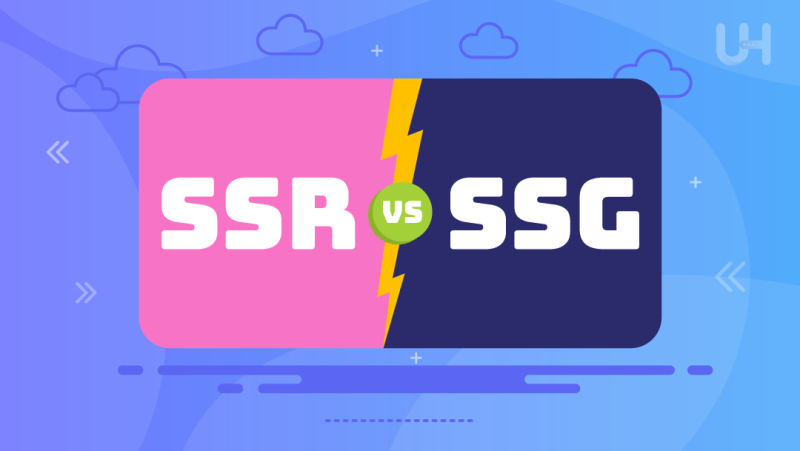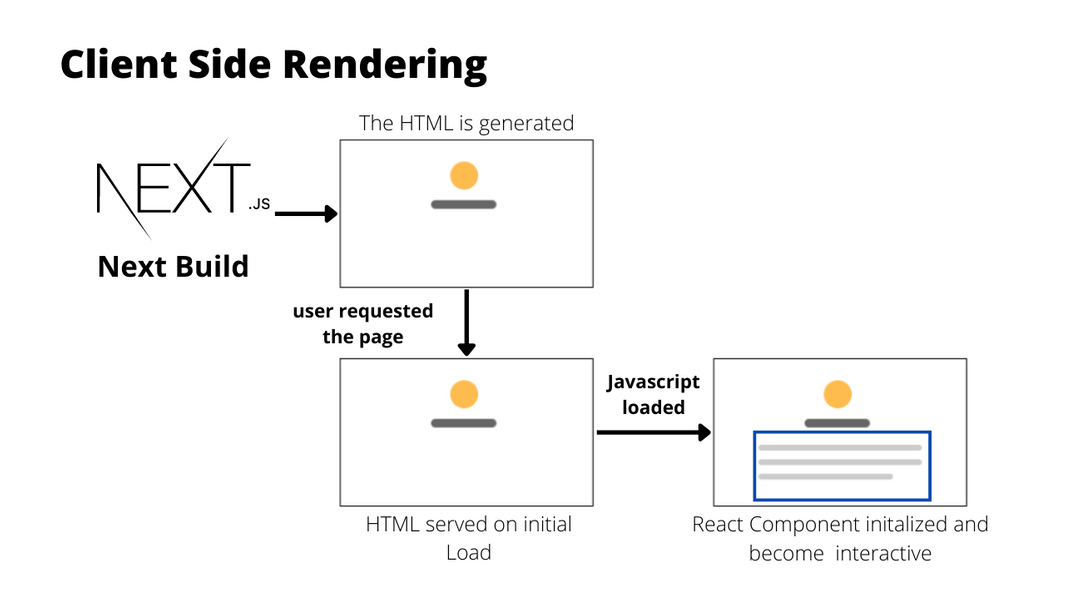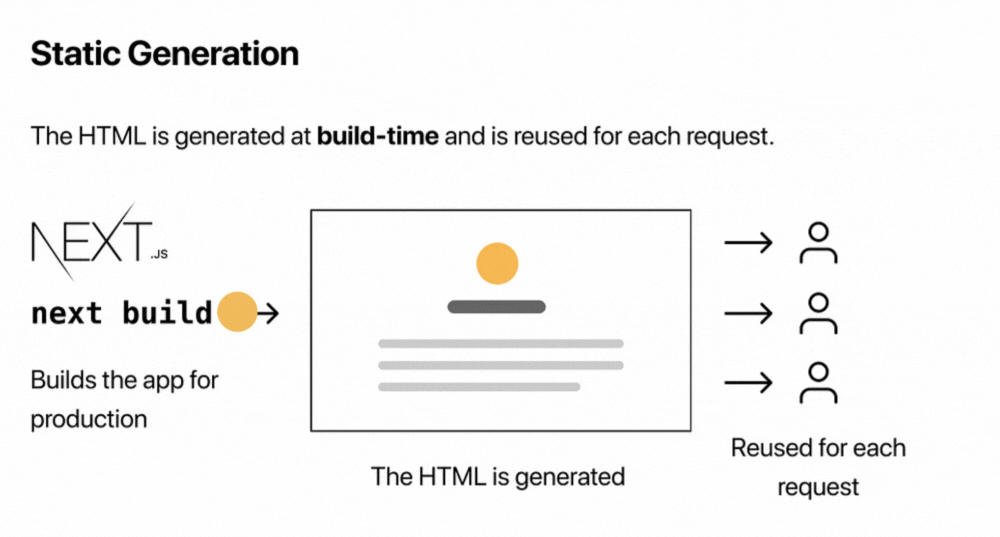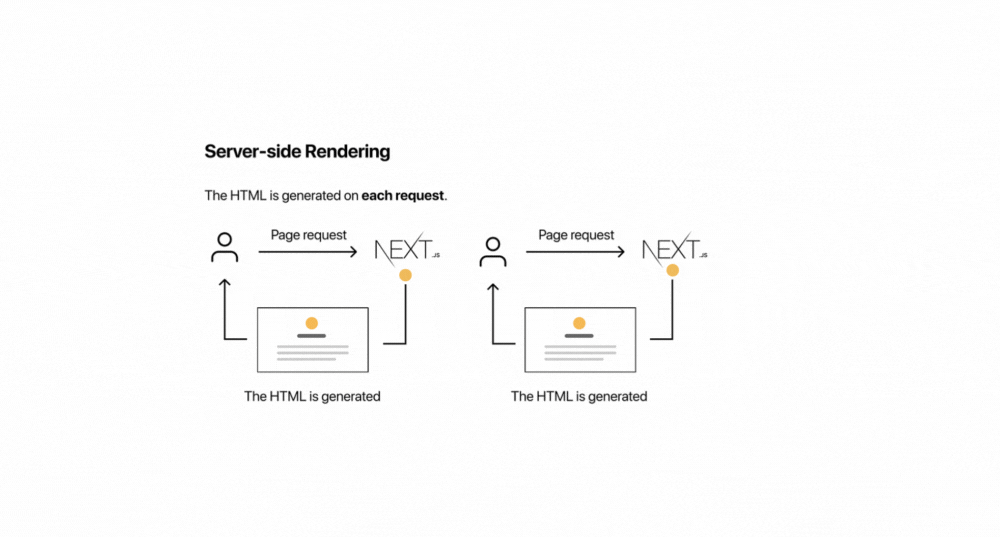
Exploring the Pros and Cons of SSG and SSR in Next.js

In this guide, we will cover the following:
-
What is SSG (Static Site Generation)?
Understanding how SSG works and when to use it. -
What is SSR (Server-Side Rendering)?
Exploring SSR, its benefits, and ideal use cases.
We will discuss and compare the following:
-
Performance
Analyze how SSG and SSR impact the performance of your Next.js application. -
Content Freshness
Examine how each method handles content updates and real-time data. -
Scalability
Evaluate the scalability of SSG and SSR, especially for high-traffic applications. -
SEO
Determine which rendering method offers better SEO advantages. -
Use Cases
Identify common scenarios where SSG or SSR would be the best choice.
WHAT IS STATIC SITE GENERATION (SSG)?
Static Site Generation (SSG) is a rendering method where HTML pages are generated at build time. This means that the content is pre-rendered and served as static files, resulting in fast load times.

How SSG Works in Next.js
SSG in Next.js is implemented using the getStaticProps and getStaticPaths functions. These functions allow Next.js to generate static HTML for each page at build time:
getStaticProps: Fetches data at build time and passes it as props to the page component.getStaticPaths: Generates paths for dynamic routes at build time, ensuring all necessary pages are pre-rendered.
Advantages of SSG:
- Performance: Pre-rendered pages load quickly, offering a smooth user experience.
- Scalability: SSG is highly scalable since static files can be served efficiently, even under heavy traffic.
- SEO: Fully rendered HTML pages are easily crawled and indexed by search engines.
Use Cases for SSG:
- Blogs
- Marketing websites
- Documentation sites
- E-commerce product pages with infrequent updates
WHAT IS SERVER-SIDE RENDERING (SSR)?
Server-Side Rendering (SSR) is a rendering method where HTML pages are generated on the server for each request, allowing for dynamic content based on user input.
How SSR Works in Next.js
SSR in Next.js is implemented using the getServerSideProps function. This function fetches data on the server for every request and passes it as props to the page component:

getServerSideProps: Runs on the server for each request, allowing real-time data fetching and rendering.
Advantages of SSR:
- Dynamic Content: SSR is ideal for applications that require real-time data, such as dashboards or personalized content.
- SEO: Like SSG, SSR renders fully formed HTML, making it SEO-friendly.
- Flexibility: SSR allows for real-time updates, making it perfect for applications with frequently changing content.
Use Cases for SSR:
- User dashboards
- News websites
- E-commerce sites with personalized recommendations
- Social media feeds
SSG VS. SSR: WHEN TO USE EACH?
Performance
- SSG typically offers better performance as pages are pre-rendered and served as static files.
- SSR might introduce some latency due to the server-side processing required for each request.
Content Freshness
- SSG is suitable for content that doesn’t change often.
- SSR is better for pages where content needs to be fresh and updated frequently.
Scalability
- SSG is more scalable, reducing the server’s workload by serving static files.
- SSR may require more resources since it renders content on the fly for each request.
SEO
- Both SSG and SSR are SEO-friendly, but SSG’s faster load times can positively impact SEO.
COMBINING SSG AND SSR IN NEXT.JS
Next.js allows you to combine SSG and SSR within the same application. For example:
- Use SSG for static pages like homepages or blog posts.
- Use SSR for dynamic pages like user dashboards or product detail pages with frequently updated content.
Incremental Static Regeneration (ISR) in Next.js offers the best of both worlds, enabling you to update static content at runtime, ensuring up-to-date content without sacrificing performance.
CONCLUSION
Both SSG and SSR have their strengths, and choosing the right one depends on your application’s requirements. By understanding the differences between SSG and SSR, you can make informed decisions to enhance your web application’s performance, scalability, and user experience.
What did I miss? Let me know in the comments, and I’ll add it in!